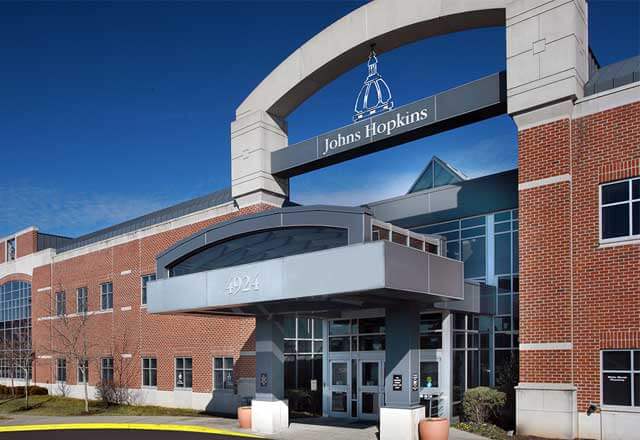Sinus Center History
Prominent Role of Johns Hopkins in the History of Rhinology in the United States
-
1933 (Milestone):
Walter Loch, M.D. joined Johns Hopkins Otolaryngology.
European surgeon Dr. Walter Loch was recruited to join the Hopkins Otolaryngology faculty, where he soon developed an interest in nasal surgery. Together with a group of experts led by his close friend Maurice Cottle, Loch participated in a traveling educational course on nasal surgery.
-
1954 (Image):
The early studies of nasal physiology and mucociliary clearance.
A rhinologic medicine course was held at Johns Hopkins, during which time the American Rhinologic Society was first conceived, for which Dr. Loch served on the founding board of directors. Donald F. Proctor, a Johns Hopkins otolaryngologist, was one of the early pioneers in the study of nasal physiology and mucociliary clearance. Clinically, he was an early adopter of endoscopy for endonasal diagnosis.
-
Mid‐1970s (Research):
Introduction to the Transnasal Ethmoidectomy & Transnasal Skull Base Surgery Microscope.
A lecture at Johns Hopkins by Hamilton S. Dixon—the pioneer of microscopic ethmoidectomy—led to the broad introduction of the microscope for transnasal ethmoidectomy and for transnasal skull base surgery outside of the field of pituitary surgery at a time when other academic institutions were still using external or headlight approaches.
-
1984 (Image):
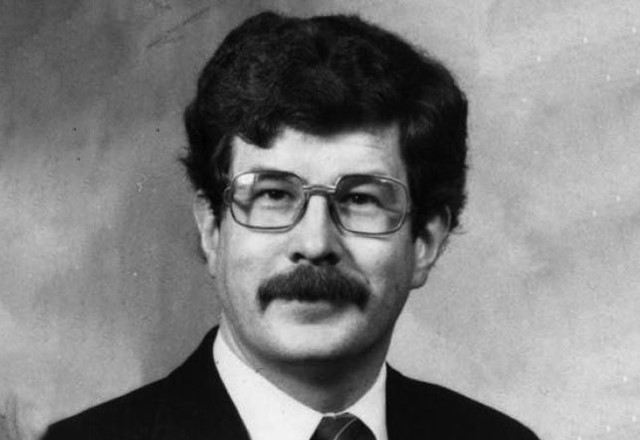
The publication of the first articles on the theoretical aspects of functional endoscopic techniques and endoscopic sinus surgery.
David W. Kennedy (graduated residency in 1978) learned from Dr. Messerklinger in Croatia about the potential for substituting the endoscope for the microscope in performing intranasal ethmoidectomy. This knowledge, combined with Donald F. Proctor's background teaching in nasal physiology and mucociliary clearance, led to a series of rabbit experiments and to the publication of the first articles on the theoretical aspects of functional endoscopic techniques and endoscopic sinus surgery.
-
1985 (Milestone):
First American Hospital to Perform Endoscopic Sinus Surgery
Dr. David William Kennedy was the first American surgeon to perform endoscopic sinus surgery. He developed a series of specially lighted miniature telescopes to serve as the first endoscopes to be used in a surgical setting. This allowed the surgeon to open blocked sinus cavities, perform biopsy lesions or correct for anatomical defects through a natural orifice while preserving the patient's native tissue structure, which required less extensive surgical intervention.
1985 (Milestone):
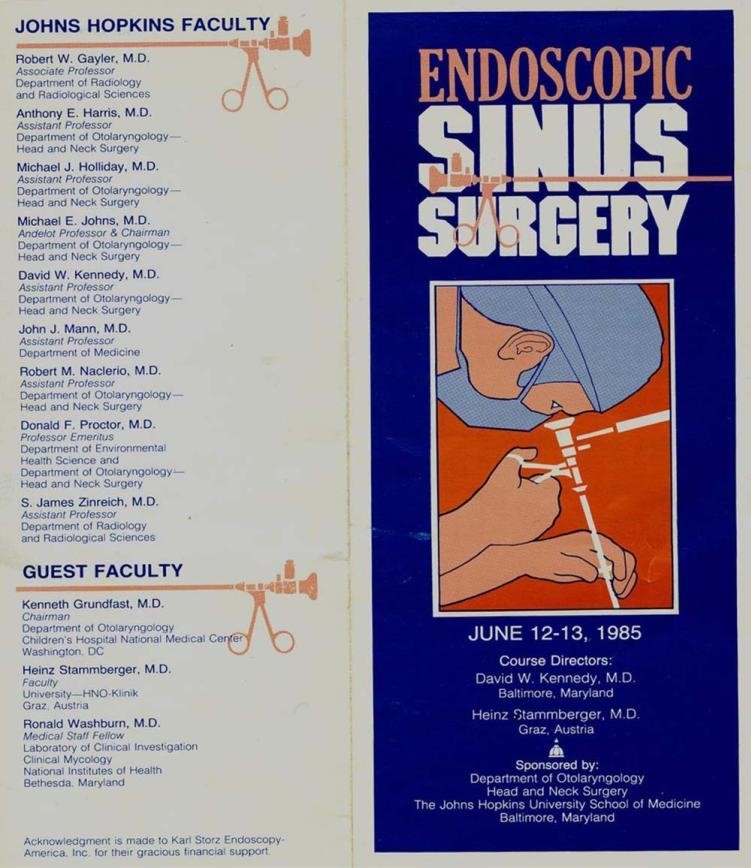
World's first course on endoscopic sinus surgery was held at Johns Hopkins.
Subsequent courses over years had lengthy waiting lists for participation. Because of the strong history of interdisciplinary cooperation at Johns Hopkins, the team rapidly extended endoscopic techniques to the management of skull base defects; orbital decompression; and, still in the 1980s, to early procedures with endoscopic pituitary surgery and management of benign and malignant skull base lesions.
-
1988 (Milestone):
First‐ever fellowship in rhinology was developed at Johns Hopkins. -
1989 (Milestone):
The first International Symposium of Infection and Allergy of the Nose (ISIAN) in the United States was held at Johns Hopkins, in conjunction with the 100th anniversary of the opening of The Johns Hopkins Hospital. -
1990s (Milestone):
Clinical and research focus in rhinology was developed at the Johns Hopkins Bayview Medical Center campus in collaboration with colleagues at the Allergy and Asthma Center.
Johns Hopkins continued its international reputation for excellence in rhinology and remained at the forefront of rapid advancements and refinements in endoscopic sinus surgery, including powered instrumentation, image‐guided surgery, and minimally invasive techniques. Continuing in Proctor's scientific tradition, Drs. Robert Naclerio and Donald Leopold were successful clinician-researchers who advanced the field through their investigations of the physiology of nasal function, inflammatory disease, and olfaction.
-
2001 (Image):
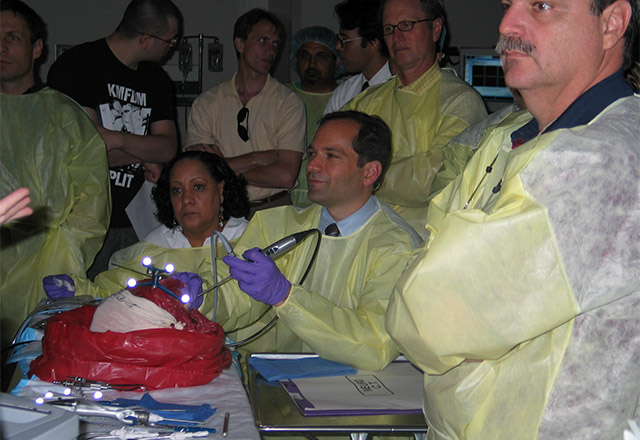
Andrew Lane, M.D. joined Johns Hopkins Rhinology program.
Otolaryngology – Head and Neck Surgery department chair, Dr. Charles W. Cummings, recruited David Kennedy's fellow at the University of Pennsylvania, Dr. Andrew Lane, to join the faculty and restart the Rhinology program at Johns Hopkins.
-
2003 (Milestone):
Division of Rhinology and Sinus Surgery created. Annual resident sinus surgery dissection course initiated. -
2006 (Document):
Johns Hopkins Comprehensive Sinus Surgery Course, featuring hands-on dissection and demonstration of new technologies, held in the Minimally Invasive Surgical Training and Innovation Center. -
2008 (Milestone):
The Johns Hopkins Rhinology and Skull Base surgery fellowship is restarted.
-
2011 (Location):
New Location and Expansion: Rhinology Division expands to Suburban Hospital under leadership of Murray Ramanathan (resident 2004-2009, fellowship 2009-2010).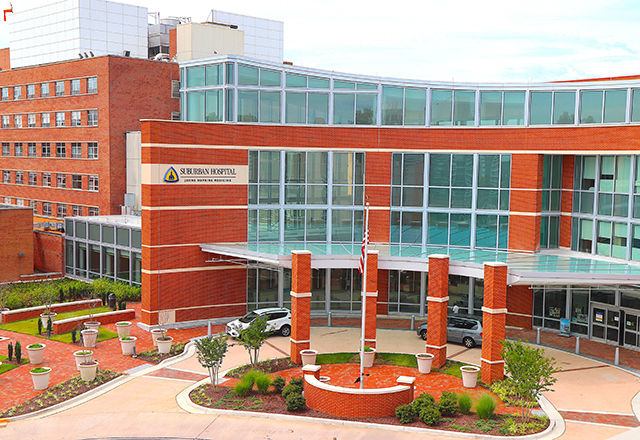
-
2013 (Research):
Groundbreaking Research and Discovery: Sinus center involved with multi-departmental clinical trials for the management of chronic rhinosinusitis with nasal polyposis. -
2015 (Research):
Groundbreaking Research and Discovery: Dr. Lane’s ongoing research to understand the causes of loss of smell.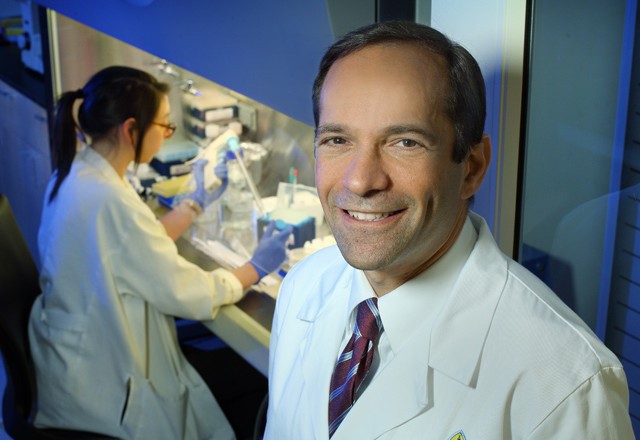
-
2018 (Research):
Groundbreaking Research and Discovery: Dr. Ramanathan's ongoing research on air pollution's link to chronic sinusitis.2018 (Research):
Groundbreaking Research and Discovery: Clinical trial performed with colleagues at the Johns Hopkins Asthma & Allergy Center is studying new medications for the management of nasal polyps. -
2019 (Location):
New Locations and Expansion: The department of Otolaryngology-Head and Neck Surgery and the Rhinology division expand into new ambulatory surgical center at Green Spring Station.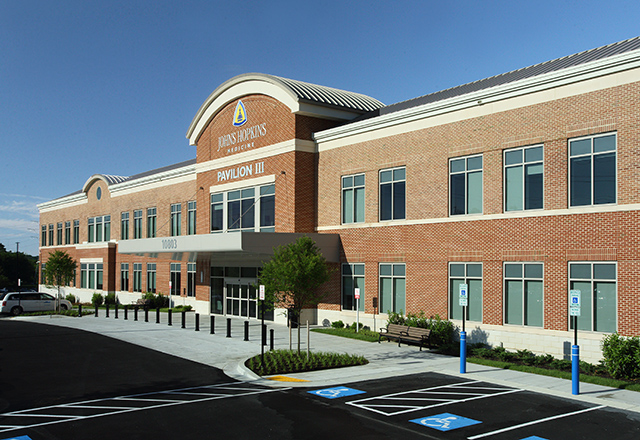
2019 (Document):
Multidisciplinary Skull Base team includes sinus surgeons, neurosurgeons, head and neck surgeons, opthalmologists, radiation oncologists and medical oncologists.2019 (Document):
Diversity and Inclusion: The department of Otolaryngology-Head and Neck Surgery celebrates a decade's long commitment to diversity and inclusion in Otolaryngology. -
2020 (Research):
Research and Funding: Significant NIH research grants for Drs. Lane and Ramanathan totaling $674,500.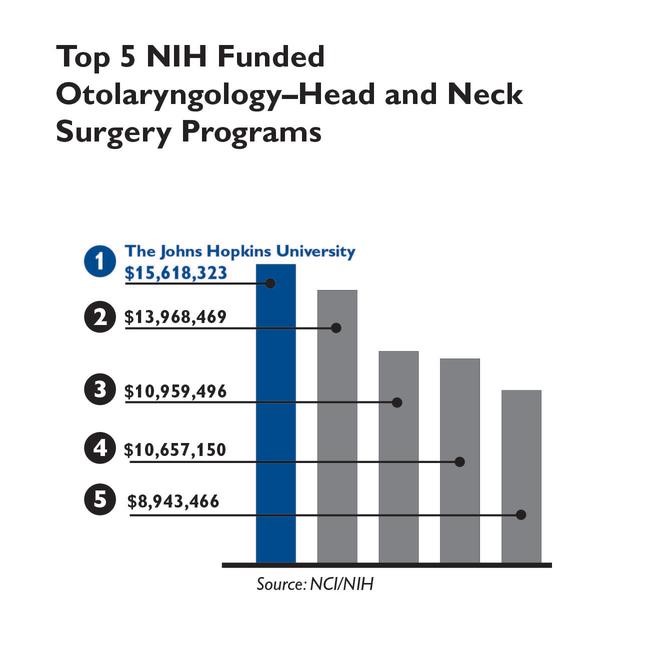
-
2021 (Location):
New Locations and Expansion: Sinus Center's locations expand in Sibley Memorial Hospital.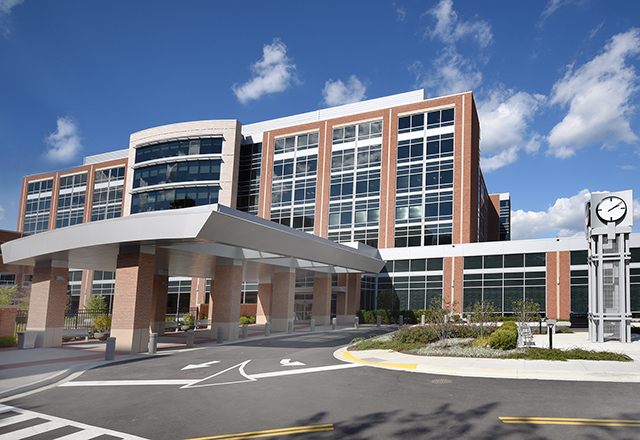
2021 (Document):
New Locations and Expansion: Sinus Center's locations expand at Johns Hopkins Health Care and Surgery Center at White Marsh.